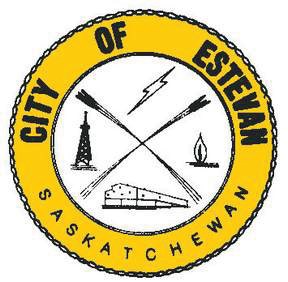There will be no change in Estevan speed limits, for the time being.
For the first time, at least in recent memory, the idea to reduce speed limits in Estevan was broached in 2009. During the regular meeting of city council Monday, Estevan’s legislators decided to accept the recommendation from Estevan Police Service Chief Paul Ladouceur and the Estevan Traffic Committee, to keep the status quo and maintain a speed limit of 50 km/h on all residential streets rather than reduce the speed to 40 km/h.
Coun. Lori Carr’s motion to accept that recommendation had unanimous support in council chambers on Monday evening.
Support for the status quo hasn’t always been so clear. A non-binding plebiscite during the municipal election in 2012 had city residents split with an inconsequential majority of less than a percent favouring a reduction in speed. Shortly after that, city council voted in favour of the principles of change.
During that initial vote, Coun. Dennis Moore was the lone councillor who opposed the reduction in speed limits. He questioned the position of many that reducing speed limits in residential areas of the city would make the streets safer.
“We have to keep in mind that any decision made has to go beyond a vote of popularity. It has to be based on what the necessities are and what the evidence is that supports change,” Ladouceur told council prior to Monday’s vote.
He noted the issue of speed control has evolved in the city, even in just the last two years.
“Several things have changed since the initial debate of speeds … there is now a dedicated EPS traffic unit and a stronger police emphasis on speeding,” he said in the report.
He also pointed to provincial regulation changes, which took effect June 27, regarding excessive speeding, passenger safety, vehicle impoundment and impaired driving.
“The answer may be increasing the enforcement of rules of the road rather than changing the rules of the road,” said Ladouceur.
That puts the pressure on EPS to maintain the confidence of the public that the City police will be able to handle the situation through presence, enforcement and education.
Coun. Kevin Smith, who also sits on both the Estevan Traffic Committee and the Board of Police Commissioners, has previously pushed for the reduced speed, particularly as the change was championed by former EPS Chief Del Block. Smith, however, said that a change in enforcement, that started with Block, has altered the traffic landscape in the city.
“Over the last two years, previous police Chief Del Block and Paul have focused a great deal on speed in our city,” said Smith.
He noted that looking over the results of traffic officers at EPS, the difference between aggressive driving and speeding is clear and the former is increasingly more prominent. Ladouceur has said speeding may be controlled through speed limits but not aggressive driving. It must be dealt with through other means.
“We’re getting to a point where we can start to target aggressive driving. I think we have gone a long way in the last two years in curbing the habits of drivers,” added Smith, regarding EPS's effort to effect a change in residents' driving habits in the past two years.
He noted there are other ways the city is dealing with speeding, like changing reduced speed zones to school zones, which accompany higher fines, and adding stop signs and crosswalks to some areas of the city.
The police chief’s report acknowledged that considering the nearly 50-50 split in votes cast when the question was put to residents in 2012, it’s likely the community will remain divided on the issue, whatever recommendation was to be made and whatever decision council ultimately reached.
In the report, Ladouceur alluded to a Mercury story in 2010 that detailed an electrically charged debate in council chambers.
“One thing was certain from the vote and that was that the issue deserved in-depth attention,” Ladouceur said in the report.
After nearly two years since the plebiscite, the issue hadn’t been addressed as the City’s attention turned to more pressing matters.
This past summer, council advised the Estevan Traffic Committee, which had been reformed earlier in the year, to give the issue of residential speeds some sober thought and examination, and to return with a recommendation.
The committee met on Sept. 25 and Nov. 4 to discuss and review the issue of speed control in Estevan. There were a number of factors the committee took into consideration, while discussing the matter with members of the Estevan Police Service.
Among those were whether there had been any change in frequency of motor vehicle accidents, change in frequency of vehicles striking pedestrians, the purpose of a speed reduction, a review of the complaints and police findings, and consultation with the EPS traffic unit, patrol officers and accident reconstructionist.
“It was decided by the traffic committee that any decision and recommendation should be made using an evidence-based approach,” said the report.
The report outlined how EPS has responded thus far to complaints of speeding in various parts of the city. Ladouceur said EPS has set up radar in marked and unmarked vehicles and have found few speed limit violators following the initial complaint.
Ladouceur’s report to city council also included the recommendation that changes in speed limits not be considered in such a widespread manner, but instead be looked at from a much more localized, case-by-case basis.



